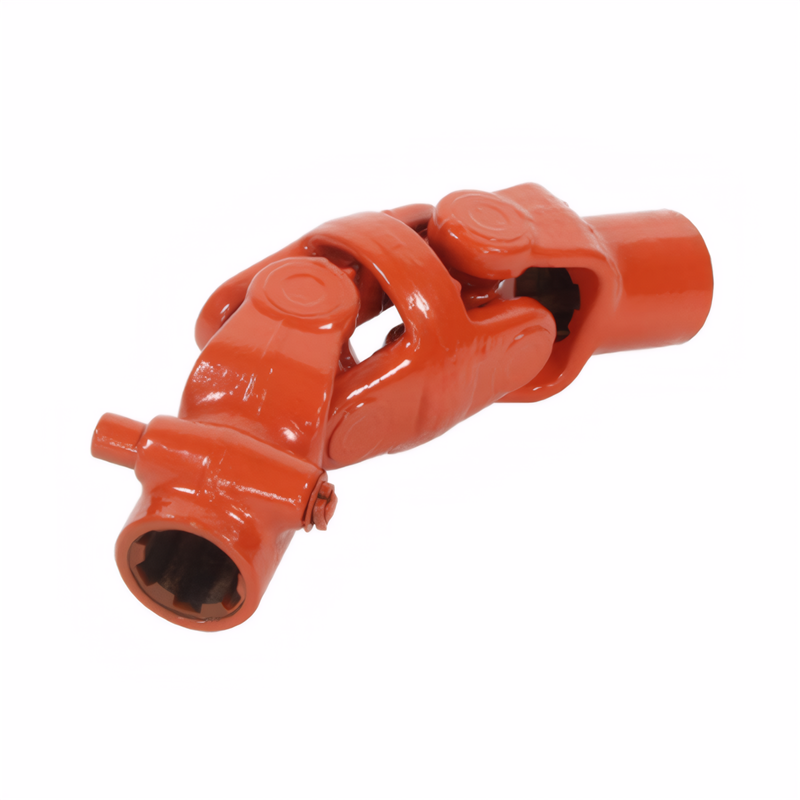The principle of torque transmission by a drive shaft
Fundamental Principles of Torque Transmission in Drive Shafts
Drive shafts serve as mechanical linkages that transfer rotational force from power sources to driven components. Their operation relies on precise engineering principles to maintain consistent torque delivery across varying operating conditions.
Shear Stress Distribution in Circular Cross-Sections
Torque transmission occurs through shear stress acting tangentially to the drive shaft's circular cross-section. When rotational force is applied, adjacent cross-sectional planes experience relative displacement proportional to the shaft's radius. The maximum shear stress (τ_max) develops at the outer surface, calculated by the formula τ_max = T*r/J, where T represents torque, r denotes radius, and J is the polar moment of inertia.
Stress Concentration Mitigation
- Fillet radii at keyway transitions reduce stress peaks by 30-50%
- Surface induction hardening increases fatigue strength by 200-300%
- Cold rolling processes improve surface finish to Ra 0.4μm or better
- Shot peening introduces compressive residual stresses up to 500 MPa
These treatments prevent premature failure at stress concentration points, enabling reliable torque transmission even under fluctuating loads. The polar moment of inertia (J) for solid shafts follows J = πd⁴/32, while hollow tubes use J = π(D⁴-d⁴)/32, where D represents outer diameter and d represents inner diameter.
Universal Joint Angular Compensation Mechanisms
Drive shafts incorporating universal joints (U-joints) maintain torque transmission across non-parallel shafts. Each U-joint consists of four needle bearings arranged in a cross pattern, allowing angular displacement between input and output shafts. During operation, the joint experiences cyclical speed variations that must be minimized through proper phasing.
Kinematic Optimization Techniques
- Parallel joint alignment maintains constant velocity within ±2%
- Preload adjustment between 5-15 N·m prevents backlash
- Lubrication intervals optimized for 50,000-100,000 km service life
- Operating angle limits set at 15-20° for continuous duty
The torque capacity of U-joints depends on bearing surface area and material yield strength. Case-hardened 20CrMnTi steel components typically withstand 1,500-2,000 N·m of torque before yielding, with fatigue life exceeding 2 million cycles under rated loads.
Constant Velocity Joint Equal Angular Velocity Design
Front-wheel-drive vehicles employ constant velocity (CV) joints to eliminate speed fluctuations during steering. The most common Birfield-type CV joint uses six or eight ball bearings trapped between an inner race and outer housing. This configuration maintains equal angular velocity regardless of joint angle by distributing torque through multiple contact points.
Torque Path Analysis
- Ball bearings transfer 85-90% of applied torque
- Grease channels provide continuous lubrication at operating temperatures up to 120°C
- Boot seals maintain IP67 protection against contaminants
- Tripod-style variants use three rollers for compact packaging
During articulation, the CV joint's torque capacity remains constant due to its symmetrical load distribution. The maximum operating angle typically ranges from 25-30° for passenger vehicles, with some heavy-duty designs accommodating up to 45°. The joint's efficiency remains above 96% across its entire operating range due to minimized sliding friction between components.
 The inspection method for the
The inspection method for the
 Symptoms of wear of the univer
Symptoms of wear of the univer
 Analysis of the Causes of Abno
Analysis of the Causes of Abno
 The ability of the drive shaft
The ability of the drive shaft
 简体中文
简体中文 English
English
